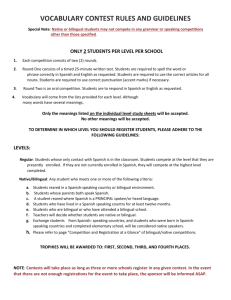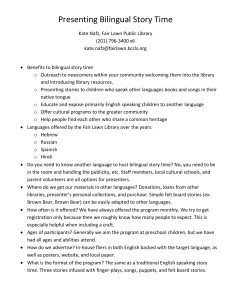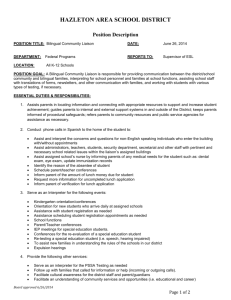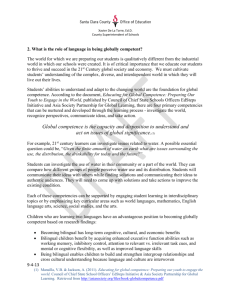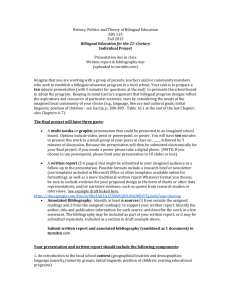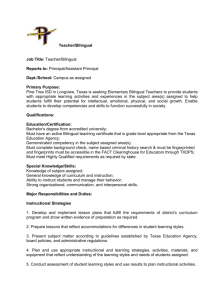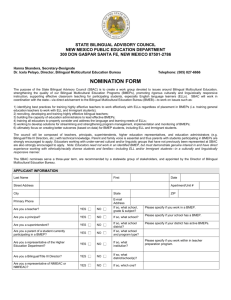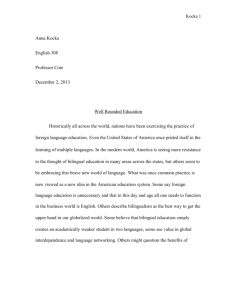Grant Proposal
advertisement
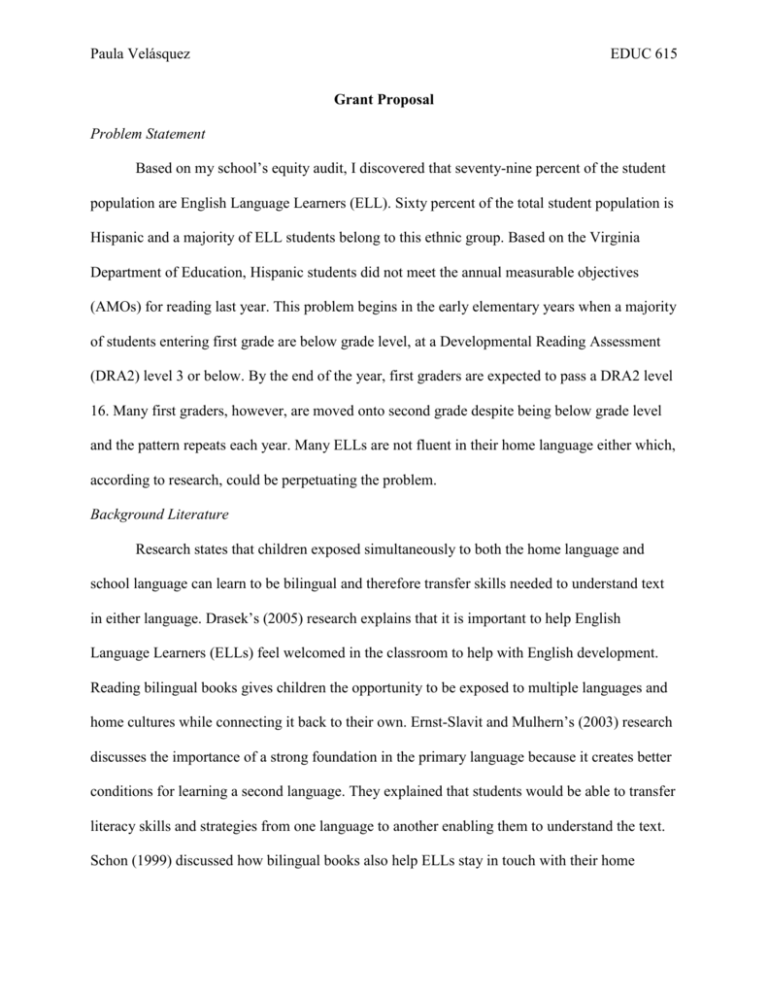
Paula Velásquez EDUC 615 Grant Proposal Problem Statement Based on my school’s equity audit, I discovered that seventy-nine percent of the student population are English Language Learners (ELL). Sixty percent of the total student population is Hispanic and a majority of ELL students belong to this ethnic group. Based on the Virginia Department of Education, Hispanic students did not meet the annual measurable objectives (AMOs) for reading last year. This problem begins in the early elementary years when a majority of students entering first grade are below grade level, at a Developmental Reading Assessment (DRA2) level 3 or below. By the end of the year, first graders are expected to pass a DRA2 level 16. Many first graders, however, are moved onto second grade despite being below grade level and the pattern repeats each year. Many ELLs are not fluent in their home language either which, according to research, could be perpetuating the problem. Background Literature Research states that children exposed simultaneously to both the home language and school language can learn to be bilingual and therefore transfer skills needed to understand text in either language. Drasek’s (2005) research explains that it is important to help English Language Learners (ELLs) feel welcomed in the classroom to help with English development. Reading bilingual books gives children the opportunity to be exposed to multiple languages and home cultures while connecting it back to their own. Ernst-Slavit and Mulhern’s (2003) research discusses the importance of a strong foundation in the primary language because it creates better conditions for learning a second language. They explained that students would be able to transfer literacy skills and strategies from one language to another enabling them to understand the text. Schon (1999) discussed how bilingual books also help ELLs stay in touch with their home Paula Velásquez EDUC 615 culture and not feel ashamed by it. She believed that you had to foster the love of reading first because literacy will help the student practice the skills they need to become fluent in any language. Research also found that this skill is not possible without the support of parents. The American Speech-Language-Hearing Association (2005) explains that being bilingual is a skill that needs to be practiced daily and parent support is vital to this development. They found that one way of supporting bilingualism is to provide children with bilingual books which expose children to literature in both languages. Sneddon (2008) also found in his research that parents can help children become literate in both languages through the use of dual language books. The Colorín Colorado (2007) website is devoted to helping native Spanish-speaking families support their children’s language development skills. This website even provides parents with research that explains how children who learn to read in Spanish will have an easier time learning to read, write, and speak in English. Colorín Colorado (2007) also suggests daily print-rich environment full of Spanish books to help maintain the home language. Parent support at home and teacher support at school though the use of bilingual books is crucial if children are to be bilingual. Proposed Solution Based on the research found, children need to be exposed to dual language books in order to become fluent in two languages. Since parents play a key role in helping children maintain their home language, I decided to write an Early Childhood Reading grant through Target that would provide money for a new reading program at my school next year. Many parents do not read or even speak English so they are not always able to help children with their homework or even read with them. If bilingual books were to be provided, then parents could help students practice their reading strategies through the use of dual language books. Paula Velásquez EDUC 615 Through the reading program “Junto Leemos/Together We Can Read” native Spanishspeaking families would participate in this parent-student book club. Parents and their children would be able to read bilingual books together and engage in conversation about the stories strengthening their oral language and comprehension skills. This will help parents connect to and support their child's academic skills as well as help their child retain the home language. If awarded this grant, $2000 will be received to help set up this reading program for thirty families from the primary grades (kindergarten through second grade). The $2000 will be broken down as follows: Spanish/English Bilingual Books (K-2) - $1,200 Workshop - $800 Food - $200 At the parent workshops each month students will receive a new book to keep. Workshops will provide parents with books, materials, strategies, activities, and games to use at home as well as a Spanish translator so that parents can understand the teacher that is presenting. Money will also be used to pay the teachers helping at the parent workshops. Food will be provided to help entice parents and students to attend. Anticipated outcomes are that students participating in this program will show progress in oral language and reading skills, which includes decoding and comprehension strategies. Another anticipated outcome is increasing parental involvement in their student's education as well as strengthening the bond between parent and child. It is the hope of this program that parents will be able to support their child's reading with help received from the parent workshops. Parental involvement in a child's education will be measured by parent attendance to Paula Velásquez EDUC 615 monthly workshops as well as mid-year and end of year satisfaction surveys. These surveys will provide data on how effective the program is and how to improve it the following year. Student progress in reading will be determined by the Developmental Reading Assessment (DRA2) that is given at the beginning, middle, and end of the year. These students' scores will be compared to other Spanish-speaking students not participating in the program. This comparison will help determine if students in the program are demonstrating growth. A success chart will be given to students and parents so that they can monitor and celebrate their progress throughout the year. This program will serve as a safe place for both students and parents to learn and celebrate successes.


